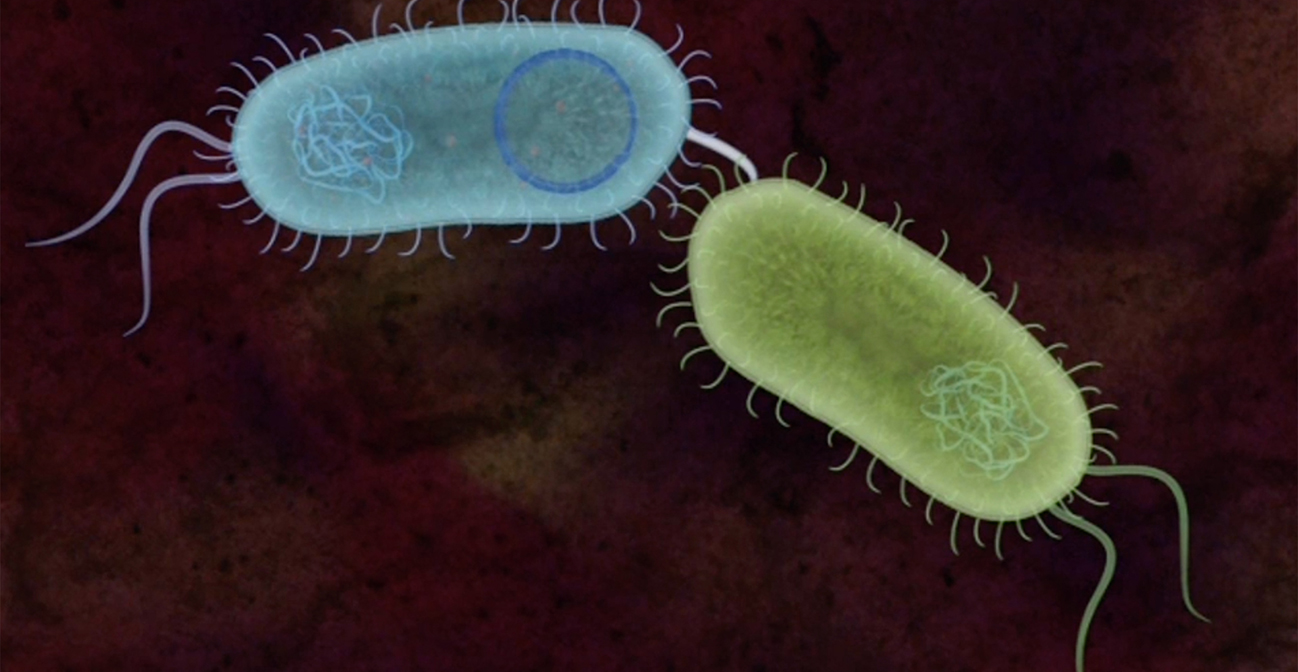Join us for conversations that inspire, recognize, and encourage innovation and best practices in the education profession.
Available on Apple Podcasts, Spotify, Google Podcasts, and more.

New diseases are evolving all around us and old diseases, such as malaria and influenza, are returning with renewed vigor. This unit studies the complex causes and far-reaching impacts of emerging infectious diseases around the globe.
ONLINE TEXTBOOK
The online textbook chapters support and extend the content of each video. The Web version can be viewed as a full chapter or as individual sub-sections, and includes links to glossary terms and other related material.
ANIMATIONS & IMAGES
Explore the archive of animations, images and figures from the videos and online textbook. All of the images can be viewed online or downloaded as jpg files.
EXPERT INTERVIEW TRANSCRIPTS
Read profiles of the expert scientists featured in the video and find the complete transcripts of the interviews conducted for this unit.
Capt. Daniel Carucci, M.D., Ph.D.
Rita Colwell, Ph.D.
Stuart B. Levy, M.D.
Judith M. Martin, M.D.
Lukas K. Tamm, Ph.D.
Introduction
Why Do Diseases Emerge?
The Human Body as an Ecosystem
The Emergence of Antibiotic-Resistant Bacteria
Mechanisms of Resistance
Microbial Adaptation and Change
Lateral Gene Transfer
Transposons
Travel, Demographics, and Susceptibility
New Technologies
Animal Reservoirs
Insect Vectors
Climate and Weather
Preventing and Controlling Emerging Infectious Disease
Antigenic shift
Changes in proteins in the outer envelope of a virus, resulting from the reassortment of viral genes. Major epidemics of influenza occur after antigenic shifts have taken place, because individuals are not immune to the substantially modified viruses.
Bacteriocin
Proteins produced by some bacteria, which inhibit the growth of other strains of the same organism or related species. Genes for bacteriocins may reside on plasmids.
F-plasmid
A fertility plasmid containing genes allowing for conjugation of certain bacteria.
Hemorrhagic disease
Diseases characterized by the leakage of blood and/or fluid from mucous membranes.
Hfr
A high frequency of recombination strain of bacteria in which an F-plasmid has become incorporated into the bacterial chromosome.
Horizontal gene transfer
Also referred to as “lateral gene transfer.” Exchange of genes between organisms by the action of viruses, conjugation, or transformation.
Septicemia
The rapid proliferation of pathogens in the blood.
Transduction
The movement of genetic material from one bacterium to another by means of a bacteriophage.
Transposon
A DNA sequence that encodes various genes, including those that allow the sequence to jump to other positions within the DNA strand or to other strands of DNA.
Zoonosis
A disease that can be transmitted from other vertebrate animals to humans.
Books
Black, J. G. 2002. Microbiology – Principles and explorations. 5th ed. New York: John Wiley and Sons.
![]() A readable college-level microbiology text that focuses on health-related topics.
A readable college-level microbiology text that focuses on health-related topics.
Garrett, L. 1994. The coming plague – Newly emerging diseases in a world out of balance. New York: Penguin Books.
![]() Details the stories of those involved in outbreaks of a variety of emerging diseases, from Ebola and Lassa fever to toxic shock
Details the stories of those involved in outbreaks of a variety of emerging diseases, from Ebola and Lassa fever to toxic shock
syndrome.
Salyers, A. A., and D. D. Whitt. 2001. Microbiology – Diversity, disease and the environment. Bethesda, Maryland: Fitzgerald Science Press
![]() A college-level microbiology textbook with an ecological emphasis.
A college-level microbiology textbook with an ecological emphasis.
Articles
Dold, C. 1999. The cholera lesson. Discover 20(2):71-75.
![]() Describes Rita Colwell’s work on the association between cholera, copepods, and sea surface temperatures.
Describes Rita Colwell’s work on the association between cholera, copepods, and sea surface temperatures.
Epstein, P. R. 2000. Is global warming harmful to health? Scientific American, August, 50-54.
![]() Predicts which diseases will be on the rise as global warming
Predicts which diseases will be on the rise as global warming
progresses.
Gubler, D. J., and G. G. Clark. 1995. Dengue/eengue hemorrhagic fever: The emergence of a global health problem. Emer. Infect. Dis. 1(2):55-57.
![]() Reviews the history and emergence of dengue.
Reviews the history and emergence of dengue.
Levy, S. B. 1998. The challenge of antibiotic resistance. Scientific American, March, 1(2):55-57.
![]() Reviews how and why antibiotic-resistant bacteria arise.
Reviews how and why antibiotic-resistant bacteria arise.
Smolinski, M. S., M. A. Hamburg, and J. Lederberg, eds. 2003. Committee on emerging microbial threats to health in the 21st Century. Microbial Threats to Health: Emergence, Detection, and Response. National Academies Press. http://www.nap.edu/catalog/10636.html.
![]() Presents factors that contribute to the emergence of diseases in great detail.
Presents factors that contribute to the emergence of diseases in great detail.
Webster, R. G. 1998. Influenza: An emerging disease. Emer. Infect. Dis. 4(3):436-41.
![]() Reviews the epidemiology of influenza, highlighting the role of bird and animal reservoirs.
Reviews the epidemiology of influenza, highlighting the role of bird and animal reservoirs.